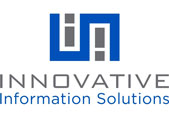Why Linux on IBM Power?
- Running Linux on IBM Power is almost always faster
- IBM Power systems are more resilient and more reliable.
- Running Linux on IBM Power system will require fewer cores thereby lowering licensing costs.
- IBM Power Systems are more secure than their counterpart X86 Servers.
Scalability
IBM POWER chips and x86 chips both enable a high level of scalability, but they do it in different ways.
With x86 chips, if you need to scale your workload up, you typically set up more servers.
On POWER-based systems, the massive computing power of the system itself is the basis for scalability. While you can always add more hardware if you want, IBM POWER chips are designed to deliver a level of performance that makes it possible to scale seamlessly without having to increase your hardware footprint.
Memory advantage
The IBM Power 9 2-socket systems provide up to 4TB of memory, 33 percent more than compared Intel x86 Xeon systems.
Performance advantage
With IBM’s focus on core architecture, the IBM Power9 systems provides for 2X the performance per core in comparison with X86 systems.
Virtualization Support
IBM POWER chips and x86 chips can both support virtualization. However, IBM POWER was designed with virtualization in mind from the very beginning and features a built-in hypervisor that operates with as little as a 2 percent loss in efficiency (as compared to running a workload directly on the hardware, without using a hypervisor). As a result, POWER chips are very good at virtualized workloads.
X86 chip manufacturers have added virtualization extensions to the x86 architecture, but x86 was not originally designed with virtualization in mind. If you want to virtualize a workload on top of an x86 chip, you must use a third-party hypervisor, such as one of the ones offered by VMware, Hyper-V or KVM.
Although virtualization solutions for x86-based computers have come a long way since their early days, it remains difficult for them to get close to the same level of performance efficiency within a virtual environment that the IBM POWER9 delivers.
The IBM Power9 scale out servers that run LINUX OS
 TCO analysis of Linux on IBM Power System
TCO analysis of Linux on IBM Power System
Get a custom TCO analysis using IBM LinuxONE TCO Calculator
https://www.ibm.com/it-infrastructure/resources/tools/linuxone-tco-calculator/
Who is using Linux on IBM Power Systems?
- Google Data Center
- Is getting more memory bandwidth for machine learning on IBM Power
- More cores and threads for core Google searches
- PayPal
- Is using IBM Power Systems to accelerate deep learning for fraud prevention
- Uber - Is using IBM Power Systems for AI Projects assist in:
- Optimize driver routing
- Identify fraudulent accounts
- Give more accurate pricing estimates to riders
Just how serious is IBM about Linux?
In Addition to IBM Power system provided more bang for your buck in comparison to running Linux on an X86 Platform, IBM has made the ultimate commitment to LINUX with its acquisition of Red Hat for $34 Billion. This is IBM’s largest acquisition in its 108 Year history. Want to run another distribution of Linux on power? In addition to RedHat, IBM power9 provides support for SUSE Linux Enterprise as well as Ubuntu Linux distributions.
Migrating to IBM Power from X86 is a simple process.
In the previous generations of the IBM power systems (Power7 and before), there was a difference in the way software was created. This was based on the term endianness. This not only affected Linux distributions but all operating systems, applications and databases that ran on those systems. x/86 systems have always used “little endian” and Power had always used “big endian.” That caused a problem because software created for little endian systems could not run-on big-endian systems without being recompiled and modified. This was an extensive level of effort. Since the IBM Power8 systems, Power systems now also support little endian. This now allows programs that were compiled in little endian systems such as X86 systems, to run without modification on the IBM Power Platform and this compatibility continues today on the IBM Power9 servers. This makes migration from X86 application or databased to migrate over the IBM Power systems with minimal effort in code changes.
Conclusion:
Linux on Power is the same as Linux on x/86, except for better performance, reliability, security and a smaller physical footprint. These are the differences that should matter most and be the key reasons why a Linux on Power solution is a better choice than an x/86-based Linux solution.

